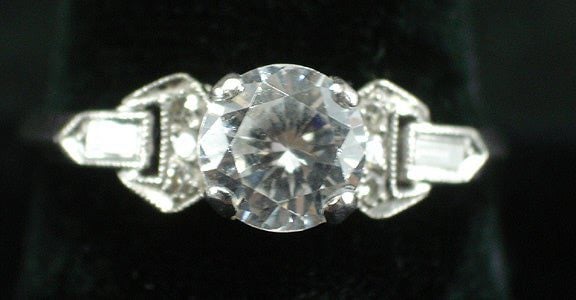
Investing in lab grown diamonds investment has emerged as an increasingly attractive option in the modern era, drivenevolving consumer preferences, technological advancements, and environmental concerns. As more individuals seek ethical and sustainable alternatives, lab diamonds are positioned as a potential gem of an investment, combining both financial value and a positive social impact. This article explores why lab-grown diamonds should be considered as a viable investment option and how they compare to traditional diamonds.
Understanding Lab Grown Diamonds
Lab-grown diamonds, often referred to as synthetic or man-made diamonds, are created in controlled environments using cutting-edge technology that replicates the natural formation process. These diamonds have the same chemical, physical, and optical properties as mined diamonds, making them indistinguishable to the naked eye. The primary difference lies in their origin—while natural diamonds are formed over billions of years beneath the Earth’s surface, lab diamonds can be produced in a matter of weeks.
This technological innovation allows for greater consistency in quality and a more sustainable production process. Additionally, the absence of environmental degradation and human rights concerns typically associated with traditional diamond mining makes lab-grown diamonds an ethically superior choice.
Why Invest in Lab Grown Diamonds?
1. Rising Demand for Ethical Luxury
Today’s consumers are more conscious of the environmental and ethical implications of their purchases. As a result, lab-grown diamonds are gaining popularity for their sustainable production and ethical sourcing. With increasing demand for conflict-free, eco-friendly options, lab-grown diamonds are becoming a preferred choice for millennials and Gen Z shoppers. This surge in popularity could signal a future increase in value, especially as consumers continue to prioritize sustainability.
2. Technological Innovation and Consistency
The technology behind lab-grown diamonds has improved dramatically in recent years, enabling the production of high-quality diamonds at a more accessible price point. High Pressure High Temperature (HPHT) and Chemical Vapor Deposition (CVD) methods allow for precise control over diamond growth, ensuring consistency in color, clarity, and carat size. This reliability is crucial for investors, as it minimizes the risk of fluctuations in quality, a common issue in the natural diamond market.
3. Competitive Pricing and Accessibility
Lab-grown diamonds are generally priced 20-40% lower than their natural counterparts, making them more accessible to a wider range of buyers. While some may argue that this price disparity could deter investment potential, it also means there is greater room for market expansion. As more consumers opt for lab-grown diamonds over mined diamonds, the demand and value of lab diamonds may increase, presenting a potential investment opportunity.
4. Sustainable and Ethical Investment
Unlike natural diamonds, which are often associated with environmental destruction and unethical labor practices, lab-grown diamonds offer an eco-friendly and socially responsible alternative. Investors who prioritize Environmental, Social, and Governance (ESG) criteria may find lab-grown diamonds particularly appealing. As sustainability becomes a driving force in investment decisions, lab diamonds could become a more attractive asset.
5. Future-Proofing Against Scarcity
The supply of natural diamonds is finite, and some experts predict that major diamond mines could be depleted within a few decades. As the availability of natural diamonds diminishes, lab-grown diamonds present a future-proof investment, ensuring access to high-quality stones without relying on depleting resources. This scarcity of natural diamonds may also drive up demand for lab-grown alternatives, further increasing their value.
Lab Grown Diamonds vs. Natural Diamonds
Investment Potential
While natural diamonds have traditionally been viewed as a store of value, particularly in the form of high-quality stones, lab-grown diamonds present a different kind of investment opportunity. The lower entry price of lab-grown diamonds allows investors to acquire more diamonds for the same capital, potentially leading to higher returns as the market expands. Additionally, the ethical and sustainable narrative surrounding lab-grown diamonds may contribute to long-term value appreciation, especially as consumers become more environmentally conscious.
Market Volatility
The natural diamond market is subject to various forms of volatility, including shifts in consumer demand, geopolitical factors, and fluctuations in mining output. In contrast, lab-grown diamonds offer more stability, as their production is not reliant on uncertain mining yields. The ability to produce diamonds on demand reduces the risk of supply shortages and price hikes, offering a more predictable market for investors.
Resale Value
The resale value of lab-grown diamonds is still a subject of debate among investors and jewelers. While the current resale market for lab-grown diamonds may not be as robust as that of natural diamonds, this could change as the market matures. As consumer preference shifts and the value of lab-grown diamonds continues to rise, we could see an improvement in secondary market demand, resulting in stronger resale potential for these gems.
Key Considerations for Investors
1. Certification and Quality Assurance
When investing in lab-grown diamonds, it is crucial to ensure that the diamonds are certified by reputable organizations such as the Gemological Institute of America (GIA) or the International Gemological Institute (IGI). These certifications provide assurances regarding the quality, grading, and authenticity of the diamonds, which is essential for maintaining their investment value.
2. Market Awareness and Timing
As with any investment, timing is critical. Understanding the lab-grown diamond market, including factors such as demand trends, technological advancements, and consumer behavior, can help investors make informed decisions. Additionally, staying informed about the broader luxury goods and jewelry markets will enable investors to capitalize on emerging opportunities.
3. Diversification
Lab-grown diamonds represent one piece of a broader investment portfolio. For those interested in alternative assets, lab diamonds can offer diversification away from traditional investments such as stocks and bonds. Given their low correlation with other asset classes, they provide a hedge against market volatility and economic downturns.
The Future of Lab Grown Diamonds as an Investment
The market for lab-grown diamonds is expected to continue its upward trajectory, drivena combination of ethical consumerism, technological advances, and increasing demand for sustainable luxury goods. As more investors recognize the value proposition of lab-grown diamonds, we can anticipate greater market acceptance and a potential rise in prices. For those looking to invest in the future of the diamond industry, lab-grown diamonds represent a forward-thinking, sustainable, and potentially profitable opportunity.
Conclusion: A Gem for the Future
In summary, lab-grown diamonds offer a compelling investment option for those interested in combining ethical values with financial gain. Their growing popularity, competitive pricing, and sustainable production methods position them as an ideal choice for investors seeking alternative assets. As the market for lab-grown diamonds continues to expand, they are poised to become a shining example of responsible luxury investing.





